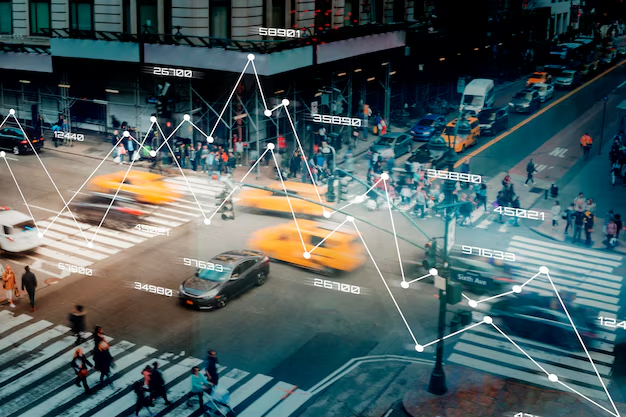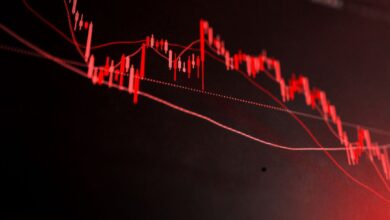Internet in Germany: Connectivity, Challenges, and the Road Toward Digital Transformation

Introduction
Germany, Europe’s largest economy, has long been a global leader in manufacturing, engineering, and innovation. Yet when it comes to the Internet, the country’s journey has been a complex one — marked by both progress and persistent challenges. The Internet in Germany plays a central role in modern life, driving digitalization in industry, education, and public services. However, issues such as uneven broadband access and data privacy debates continue to shape the nation’s digital landscape.
This article explores the evolution, infrastructure, government policies, and future outlook of the Internet in Germany, highlighting how the nation is striving to become a fully connected digital powerhouse.
1. Historical Development of the Internet in Germany
Germany was an early adopter of the Internet, with academic and research networks such as DFN (Deutsches Forschungsnetz) connecting universities and scientific institutions as early as the 1980s. By the 1990s, commercial Internet services began to spread rapidly, bringing the World Wide Web into homes and businesses.
The German government quickly recognized the importance of digital connectivity for economic growth. Initiatives like “Digital Germany 2010” and later “Digital Agenda 2014–2017” set ambitious goals to expand broadband, encourage e-government, and promote digital literacy.
Over the past two decades, Germany has evolved into a major European hub for data centers, tech startups, and digital innovation — though not without ongoing debates about speed, affordability, and rural access.
2. Internet Infrastructure and Connectivity
Broadband Access and Penetration
Germany has one of the largest broadband markets in Europe. As of recent data, more than 94% of households have Internet access, with broadband coverage reaching almost the entire population. However, the quality and speed of connections vary significantly between urban and rural regions.
While cities such as Berlin, Munich, Hamburg, and Frankfurt enjoy gigabit-level fiber networks, many rural communities still rely on slower DSL or mobile connections. The German government has recognized this digital divide as a major economic challenge.
Fiber-Optic Expansion
Germany was slower than some Nordic countries in adopting fiber-to-the-home (FTTH) technology. Historically, the country relied heavily on copper-based DSL networks operated by Deutsche Telekom, which limited speeds. In recent years, however, large-scale investments in fiber-optic infrastructure have accelerated, supported by both private companies and public funding.
The goal of the Gigabit Strategy 2030 is to achieve nationwide access to gigabit-speed Internet by the end of the decade.
Mobile Internet and 5G Rollout
Germany has one of Europe’s most advanced mobile markets, with operators such as Deutsche Telekom, Vodafone, and Telefónica (O2) providing extensive 4G coverage and expanding 5G networks. As of 2025, 5G is available in most urban areas, industrial zones, and along major transport routes.
Mobile Internet speeds have improved dramatically, enabling real-time applications, smart manufacturing (Industry 4.0), and connected mobility — key areas for Germany’s economy.
3. Government Policy and Digital Strategy
The German government has made digital transformation a top national priority. Through initiatives like “Digital Strategy 2025”, “Gigabit Strategy 2030”, and “Digitalpakt Schule”, Germany aims to build a strong, inclusive digital ecosystem.
Key policy goals include:
- Universal Broadband Access: Ensuring all citizens have access to high-speed Internet by 2030.
- Digital Education: Expanding digital infrastructure in schools through the Digitalpakt Schule initiative.
- E-Government: Improving online public services, from tax filing to digital IDs.
- Cybersecurity: Strengthening national resilience through the Federal Office for Information Security (BSI).
- Innovation & Industry 4.0: Supporting AI, IoT, and automation to keep German industries globally competitive.
Public-private partnerships and EU funding have played crucial roles in accelerating these efforts.
4. Internet Usage and Digital Lifestyle
Germany’s population is highly active online. Nearly 93% of adults use the Internet daily for communication, work, and entertainment. The digital culture is shaped by both innovation and strong consumer protection values.
E-commerce and Online Services
Germany is the largest e-commerce market in Europe, with major players like Amazon.de, Zalando, and Otto dominating the landscape. Online banking, shopping, and digital payments are commonplace, while smaller businesses increasingly adopt e-commerce platforms.
Social Media and Streaming
Germans are active on platforms such as WhatsApp, Instagram, YouTube, Facebook, and TikTok. Streaming services like Netflix, Spotify, and local platforms (ARD Mediathek, ZDF, Joyn) are popular for entertainment.
Digital Work and Education
The COVID-19 pandemic accelerated remote work and online learning. Many companies continue to offer hybrid models, supported by reliable broadband and secure cloud platforms.
5. Data Protection and Cybersecurity
Germany is renowned for its strict data protection laws, reflecting its deep-rooted commitment to privacy. The Federal Data Protection Act (BDSG), in combination with the EU’s General Data Protection Regulation (GDPR), ensures that personal data is handled responsibly.
Public awareness of digital rights is high, and organizations face strict penalties for non-compliance. The Federal Office for Information Security (BSI) leads efforts to combat cyber threats and ensure the integrity of national networks.
Recent years have also seen increased concern about cyberattacks targeting businesses, government agencies, and critical infrastructure, leading to growing investment in cybersecurity measures.
6. Challenges Facing Internet Development in Germany
Despite significant progress, several challenges remain:
- Digital Divide: Rural regions in Bavaria, Saxony, and other areas still lag behind in fiber coverage.
- Bureaucratic Hurdles: Complex regulations can slow down infrastructure projects.
- Infrastructure Costs: Expanding fiber and 5G networks requires massive investment.
- Cyber Threats: Increasing digitization brings higher risks of hacking and data breaches.
Addressing these issues is essential to ensure that Germany remains competitive in the global digital economy.
7. Germany’s Role in the European Digital Landscape
Germany plays a leading role in shaping the EU’s digital policy framework. It supports initiatives such as:
- The Digital Europe Programme, promoting innovation and skills.
- The EU Data Strategy, encouraging secure data sharing across borders.
- The Artificial Intelligence Act, ensuring ethical AI development.
By balancing innovation with strong consumer protection, Germany is helping to define Europe’s digital future.
8. Future Outlook
The future of the Internet in Germany looks promising. With continuous investments in fiber networks, 5G technology, and digital education, the country is on track to achieve full gigabit coverage by 2030.
Emerging trends such as AI integration, smart cities, and quantum computing are expected to further transform the nation’s digital infrastructure. Additionally, Germany’s strong focus on sustainability — such as energy-efficient data centers — positions it as a global leader in green digitalization.
Conclusion
The Internet in Germany reflects the nation’s broader balance between progress and precision. While challenges like rural connectivity and bureaucratic delays persist, the country’s robust infrastructure, privacy standards, and innovation-driven mindset continue to propel it forward.
As Germany advances toward a fully digital society, it serves as a model for how economic strength, democratic values, and technological excellence can work together to shape a connected and secure future.





